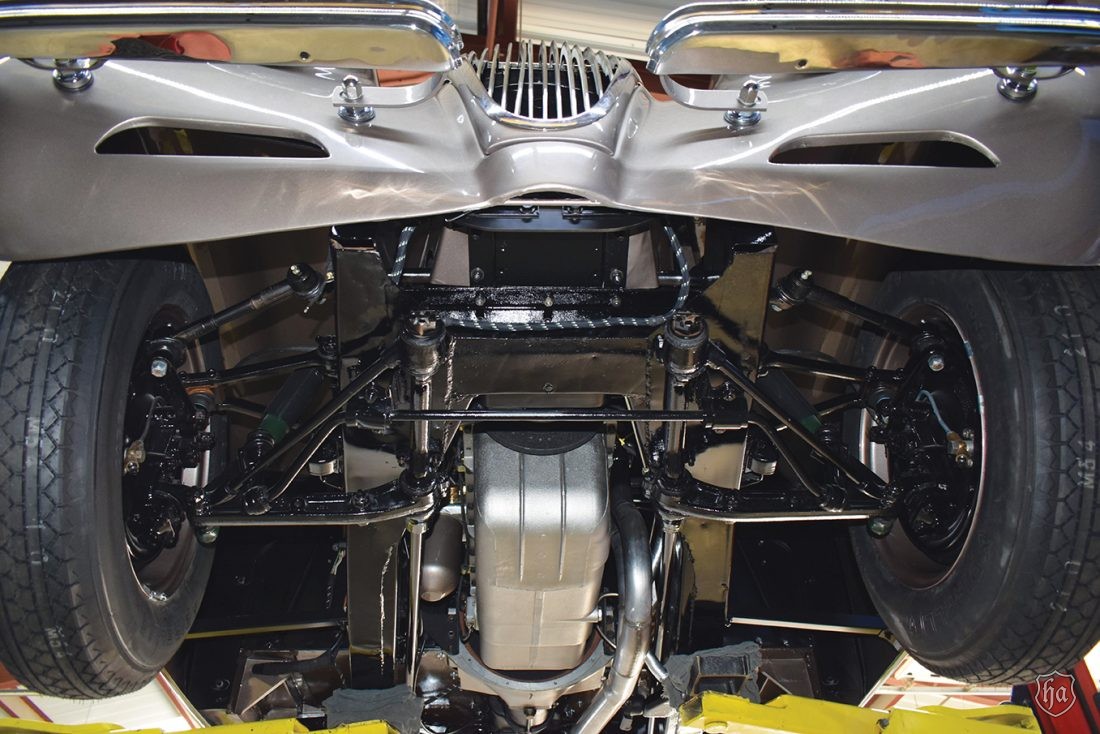Bill Wallace’s & Chuck Puth’s Racy XK120 (II)
Car restorer Bill Wallace and his business partner and close friend, Chuck Puth, are almost at the finish line on a nut-and-bolts restoration of their one-off 1952 Jaguar XK120; they will be applying shortly to compete at the 2023 Pebble Beach Concours d’ Elegance this August. They’re ready for the concours judges to take their magnifying glasses to it. Then they hope to be tipping glasses and singing a big British “Cheers.”
Recall that the left-hand-drive Jaguar XK120 roadster is one of six that appeared in the promotional Race of Champions May 10, 1952, in Silverstone, England, piloted by six stand-out drivers from around the world, including the great Stirling Moss, who won the contest, designed to promote the car in the developing United States market.
Wallace formerly owned Autobahn Collision and Preferred Collision, both in the Scottsdale Airpark. In 2019, he opened Impact Collision shop in Fountain Hills, 10 miles east of Scottsdale. His daughter, Shanti, assists him as the company office manager; she has a bachelor’s and an MBA, both from Grand Canyon University in Phoenix. Two classic restoration techs, Aaron Guthrie and Flo Augustin, led the restoration.
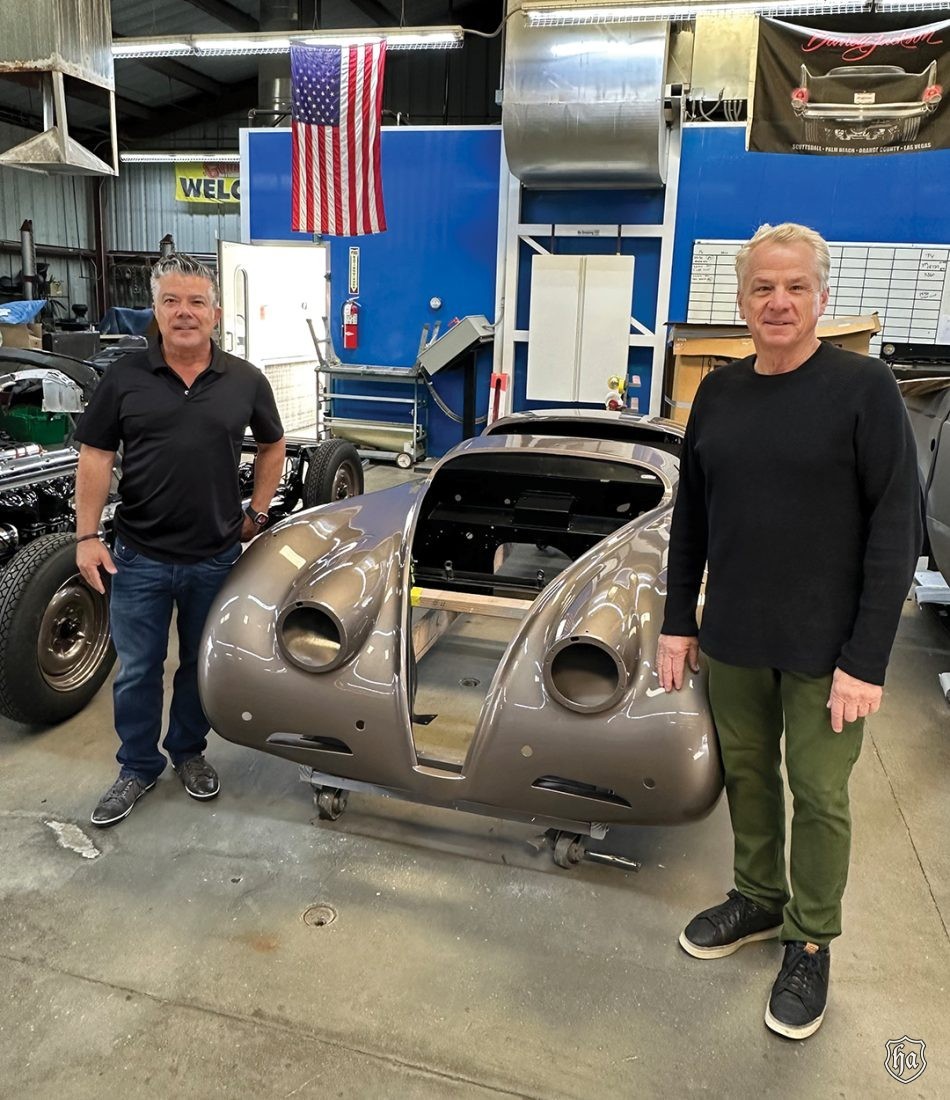
Puth is a Rumson, New Jersey, native; he built homes and apartment communities there until five years ago. Today, he and his wife Debbie live in Montecito, California, where their children are in the music industry: Charlie, Stephen and Mikaela, who manages Charlie’s career.
Documented by a certificate of authenticity from Jaguar, the one-off XK 120 is the only one in bronze and is probably the last of the sextet existing. Destined for shipment to United States, the left-hand-drive sports cars were built in March and April of 1952 with VINs 672012; 672063; 672070, Wallace’s and Puth’s steel-bodied car, built April 23, 1952; 672080; 672094; and 672104. As yet, no one has been able to identify which man drove which car in the “Race of Champions.”
At the request of William Lyons, founder and CEO of the company, Jaguar quickly designed the XK120 in 1948 to accommodate the new XK twin-cam engines that would win five times at Le Mans in the 1950s in the magnificent Types C and D. The model debuted at the London Motor Show in October 1948; capable of 120 mph, it was the world’s fastest production car.
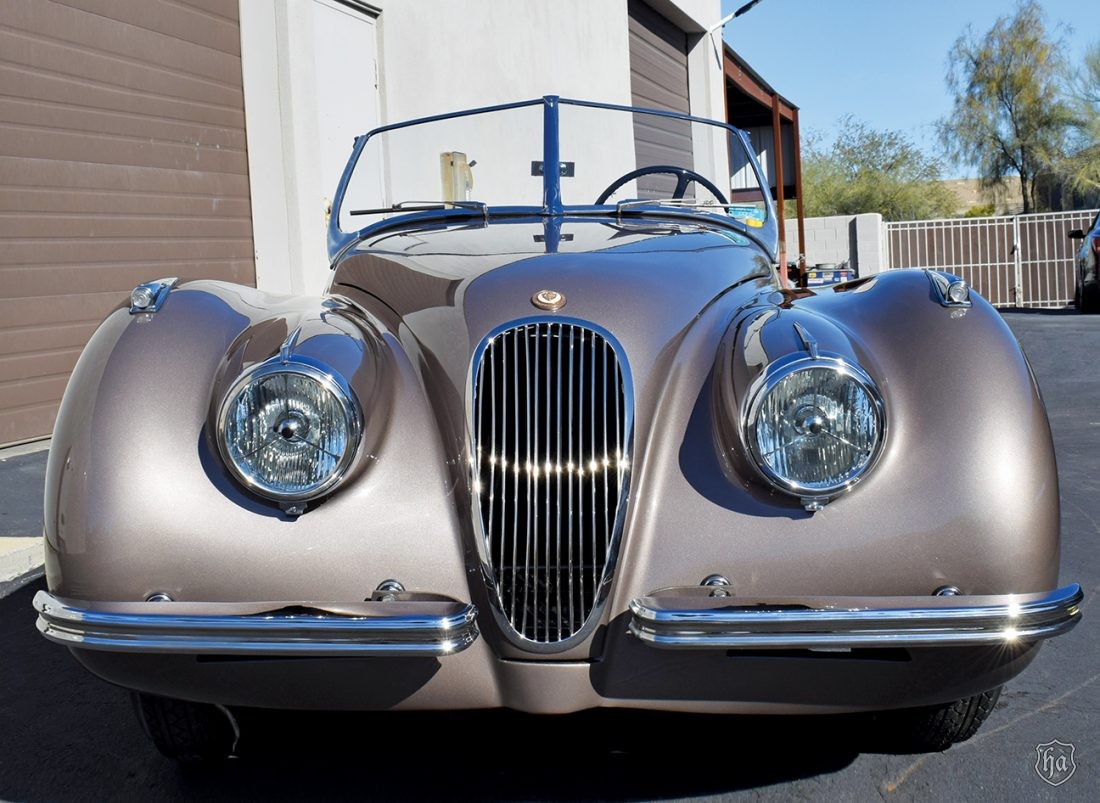
After the race, three of the cars were shipped to Charles H. ‘Chuck’ Hornburg Jr. in Los Angeles and three to Max Hoffman, who had a Park Avenue Jag dealership. Meant for private sales, not racing, the six Jags were not identified to buyers as those that had participated in the Race of Champions.
Hoffman sold #672070 to a retired New Jersey man who drove it every day and painted it white. From these times is a 1979 DMV sticker from New York State that’s still affixed to the original windshield. “What’s better than that for authentic?” Wallace asks, with a characteristic laugh.
An astute Oklahoma collector bought the XK120 from the New Jersey man started to disassemble it for restoration and stored the car in his barn, in pieces.
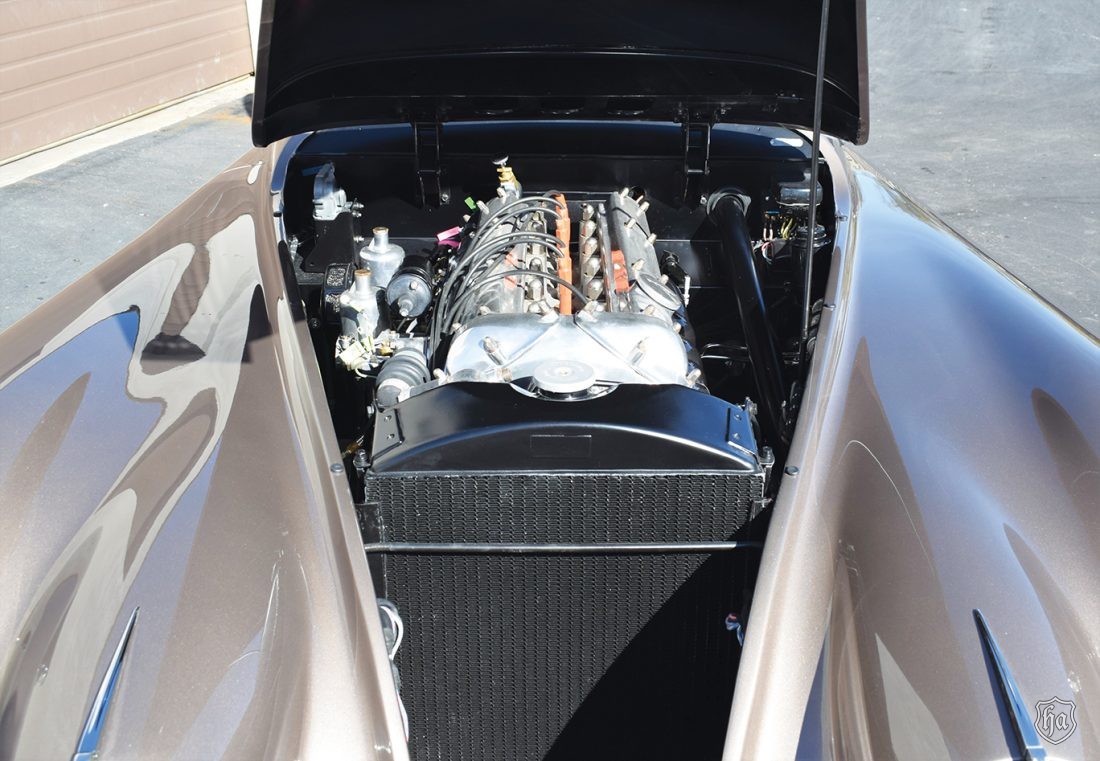
He knew the car for the rare vehicle it was because he had searched down the VIN in sources such as Jag Data, determining that this was one of the six Race of Champions cars. He was not able to find the other five during the exhaustive 12-year search, Puth says.
The two men purchased the vehicle in 2021 and had it shipped to Impact Collision –– in boxes and ready for restoration.
From the Start, Challenges
“We are doing everything by the book, to the letter,” Wallace explains, noting the shop is following a concours-level book to check every detail including fit and finish, badging, exhaust and the color-keyed steel wheels. “Everything is original or original refurbished and era correct,” he adds. “We’re looking at everything the judges are going to be looking at it. That means every grommet and every clamp, every wire.”
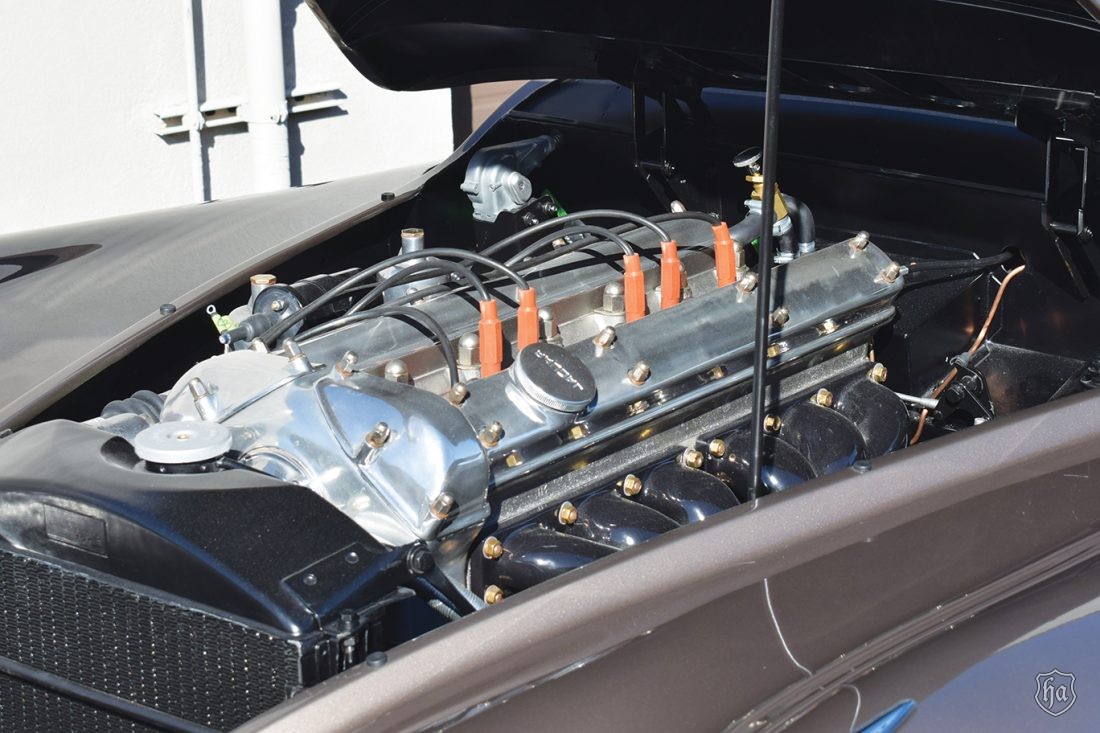
The engine and tranny have been redone to original specs by California-based specialists, and the new interior in original biscuit and tan was also completed there by Classic Car Interiors, which specializes in work on concours-grade for British and European cars. The convertible top, or “hood” in England, is fawn.
One major challenge was sourcing the parts, especially during the pandemic. Through web searches, Wallace found a number of components, including a set of original unused valve caps; a tool roll, with tools that show they’ve been used by the side of the road or in the garage; an original wood and brass hand tire pump, which also stows in the boot. “It has some scratches on it, but we’re keeping it that way; that says authentic and that it’s been used,” he says.
He and his crew are refurbishing the original steering wheel and the horn button with an acrylic inset. And, they’ve found an original ivory flying cat “growler” emblem which attaches to the bonnet. “We also found a contemporary duplication, too, for use when the car isn’t being judged; the original is rare and valuable,” Wallace explains.
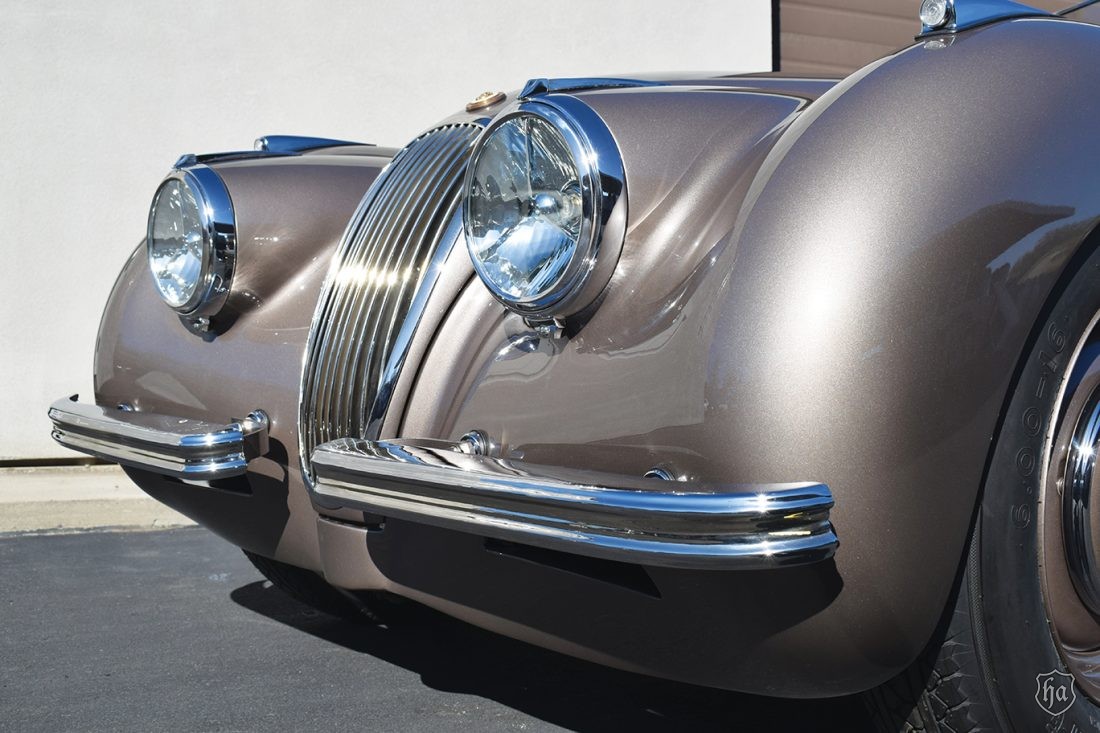
Through a friend, he also found authentic English plates. “A client of mine loves British cars and picked them up in Europe about 20 years ago,” Wallace says, noting that they have the correct badging documenting that they are original European plates.
Shanti’s persistent sourcing skills have been invaluable. The XK120 as sold did not have the original hood latch mounting bracket which secures the bonnet. “Shanti spent hours looking for it and found it through an American company that had it in a warehouse in England,” Wallace recalls. “There was just one left.”
The two six-volt batteries, mounted in the middle of the car adjacent to each other, required a special order facilitated by Shanti and special attention from technicians Guthrie and Augustin.

“The two sixes were necessary because when the temperature was below freezing, which is common in England, the batteries depleted and you wouldn’t have enough starting power.”
Guthrie points out that a channel delivers radiant heat from the engine compartment back to the units: “So, as soon as you start the car, the engine heat begins to warm up the batteries.”
Jag & Friendship Joys
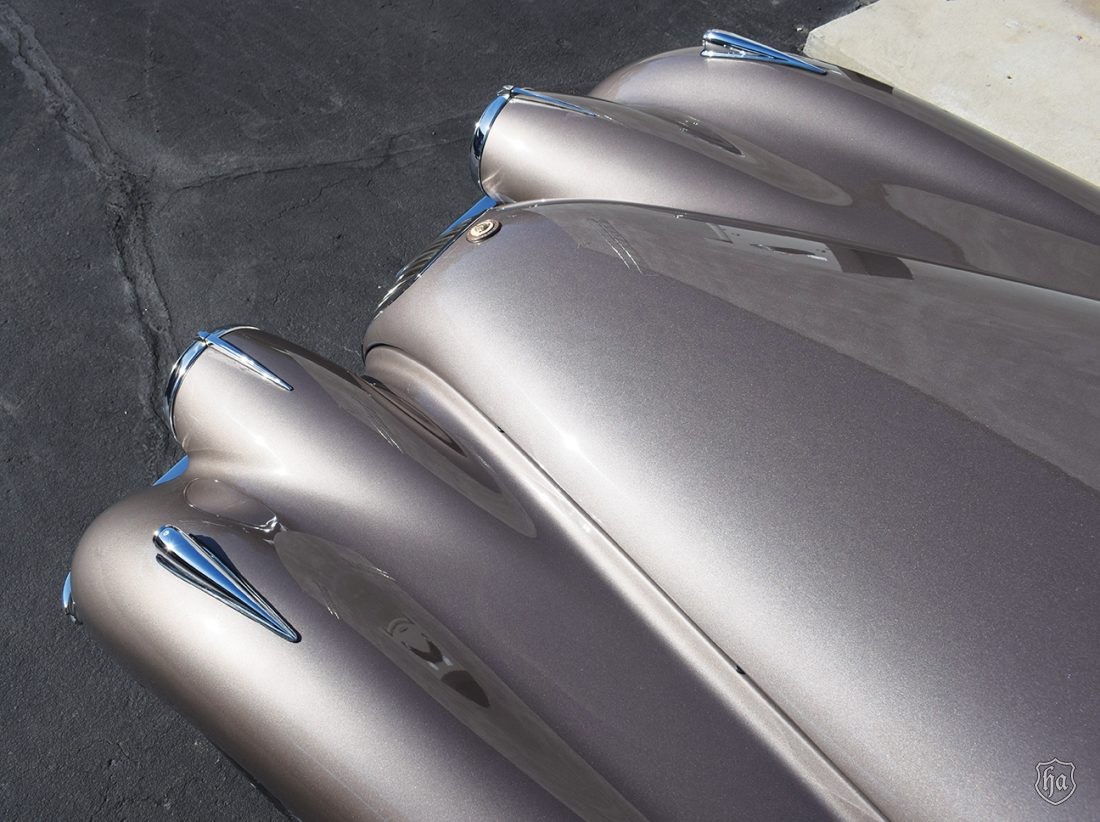
“Our common joy is to bring cars like this back to life,” Puth says. “I was in Vermont a while ago and noticed that so many of the old barns are like that, so you just think how good it would be to see them vital again. It’s like that with the old cars, too.”
In 2020, the men started working together to restore Puth’s badly aged 1967 Lincoln Continental, and they’ve also collaborated on a magnificent two-tone 1963 Austin-Healey, which also began with the parts in boxes. “A real friendship starts with the love of something. In this case, we love the car and trust each other restoring it,” Puth says.
He adds: “I’ve seen so many classics, survivor cars, just sitting out there, and, as they say, once they are gone, they are gone. The Austin-Healey, for instance, would qualify for historic races. We’re restoring this XK120 with this in mind as well and want to select others after this. A Mercedes Gullwing, perhaps, or one of those elegant Facel Vegas from the ’50s and ’60s with Chrysler Hemis. Then we want to show them to the world.”
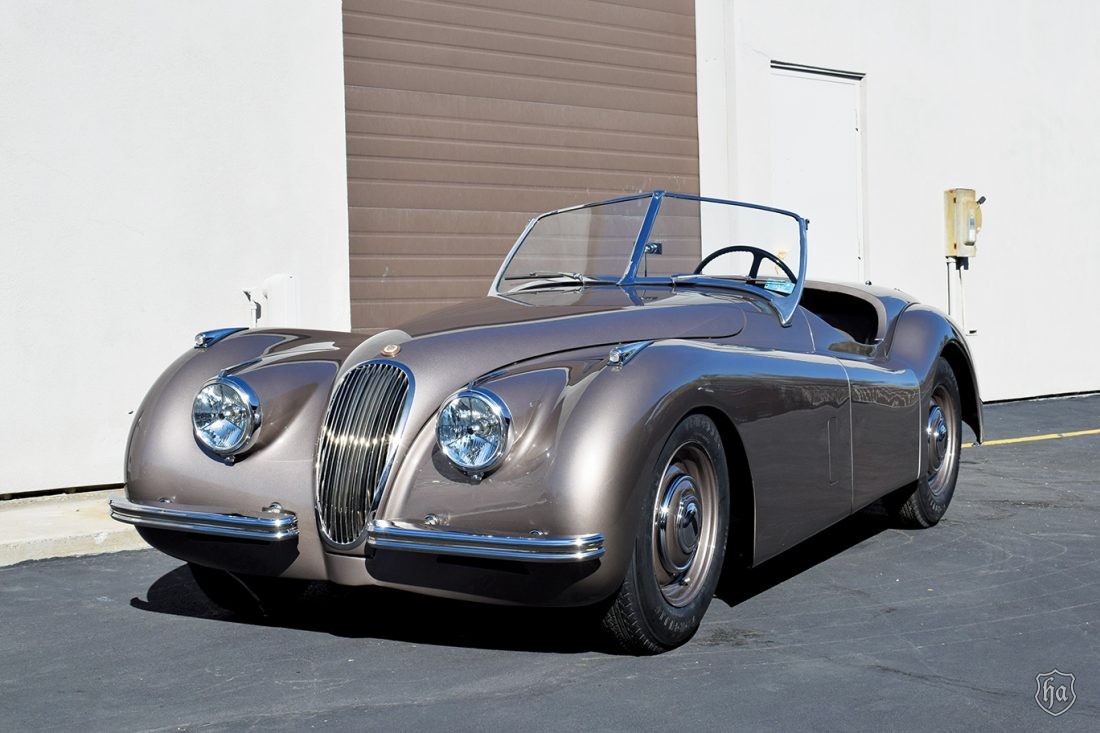
The two men, in fact are considering a television show based on this common passion. “We’ll choose a classic, talk about how we found it, the history and the restoration process,” Wallace says. “We’ll do one, then move to another. We’re not going to say yes to every car. We’re not the fast food stop of car restoration. We are going to select cars that deserve more than sitting, aging, in a garage a back lot, a barn.”
Internet prime time will have its time. Right now, it’s Jag time. “This very special XK120 has got that James Bond look and it’s unique in styling. It’s 100% factory, and everything is in the right place. There’s heritage here. And pedigree. We’re ready.”
For more information, call or email Bill Wallace at Impact Collision, 480.809.6745 and bill@impactcollisionshop.com.
